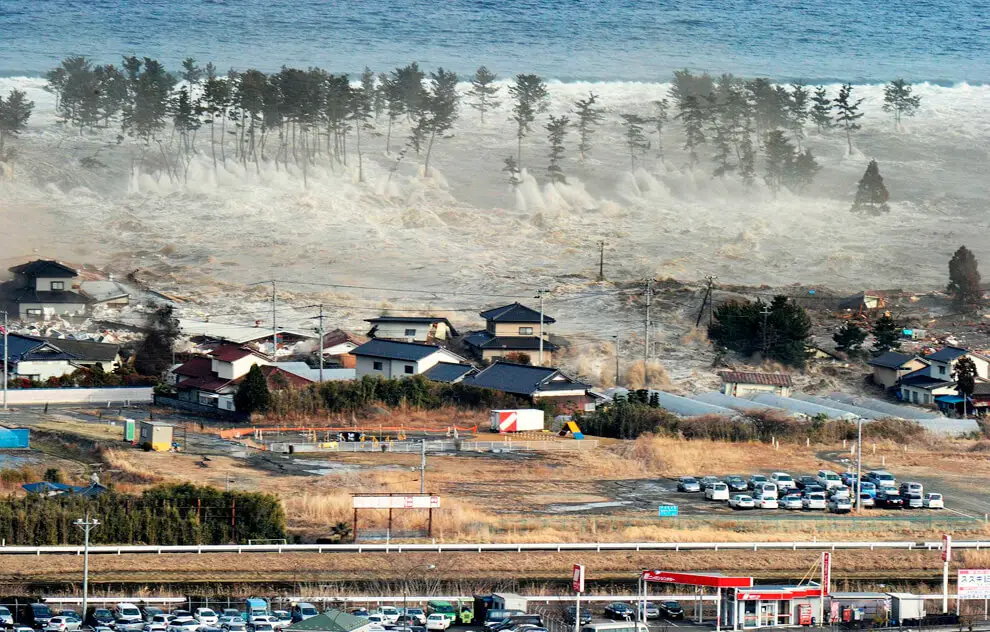At 2:46 PM on March 11, 2011, Japan faced an unprecedented tragedy. A magnitude 9.0 earthquake struck off the northeastern coast, unleashing a massive tsunami that devastated entire towns. Over 19,000 lives were lost, countless homes destroyed, and critical infrastructure left in ruins. This event became a defining moment in Japan’s history, not just for its scale but for the resilience and unity it inspired. Understanding this disaster and its impact offers a glimpse into Japan’s struggles and its strength and determination to rebuild. Learn more about the recovery efforts and how they shaped modern Japan by exploring the 2011 Japan Earthquake recovery initiatives.
The Earthquake: A Natural Catastrophe
On March 11, 2011, the earth heaved and groaned under incredible tension. The result? A catastrophic earthquake that forever changed Japan. This wasn’t just any earthquake; it was one of the strongest ever recorded. Let’s break it down.
Magnitude and Epicenter
Imagine standing still, and suddenly, the ground beneath you lurches violently. At 2:46 PM JST, a magnitude 9.0 earthquake struck off Japan’s northeastern coast. Its epicenter was about 72 km (45 miles) east of Tohoku, beneath the Pacific Ocean. That’s roughly the length of a marathon! This staggering force was so powerful, it shifted the Earth’s axis by centimeters, shortening our days ever so slightly.
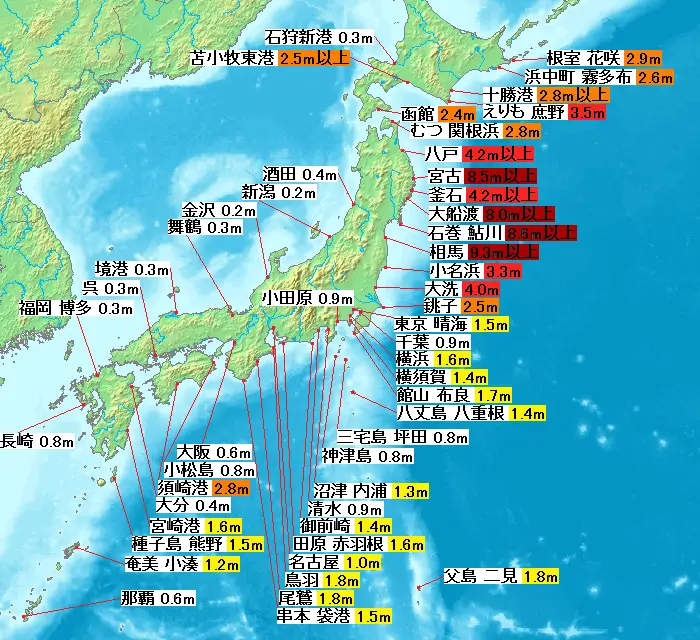
The Tectonic Forces Behind the Disaster
Why did this happen? The answer lies deep beneath the surface, in the subduction zone, where two tectonic plates converge. At the heart of this earthquake was the Pacific Plate sliding beneath the North American Plate. Think of it like a drawn bowstring suddenly released – years of built-up tension gave way in a matter of seconds. These invisible forces unleashed energy equivalent to the daily electricity consumption of the entire world for an entire year. The geological chaos serves as a grim reminder of how small we are compared to Earth’s grandeur.
Series of Aftershocks
The initial quake wasn’t the end of the story. Over the next days and weeks, hundreds of aftershocks rippled through the region, some reaching magnitudes of 7.0 or higher. Each aftershock felt like déjà vu—a harrowing reminder of the initial disaster. These smaller but potent quakes slowed recovery efforts and kept nerves on edge as people wondered when the ground would settle. Curious about the science of aftershocks?
The 2011 Japan earthquake was more than a natural disaster; it was a shared experience that tested Japan’s mettle. Understanding it helps us prepare for a future where such tragedies may strike again. Stay tuned to learn about the aftermath and resilience that followed this catastrophic day.
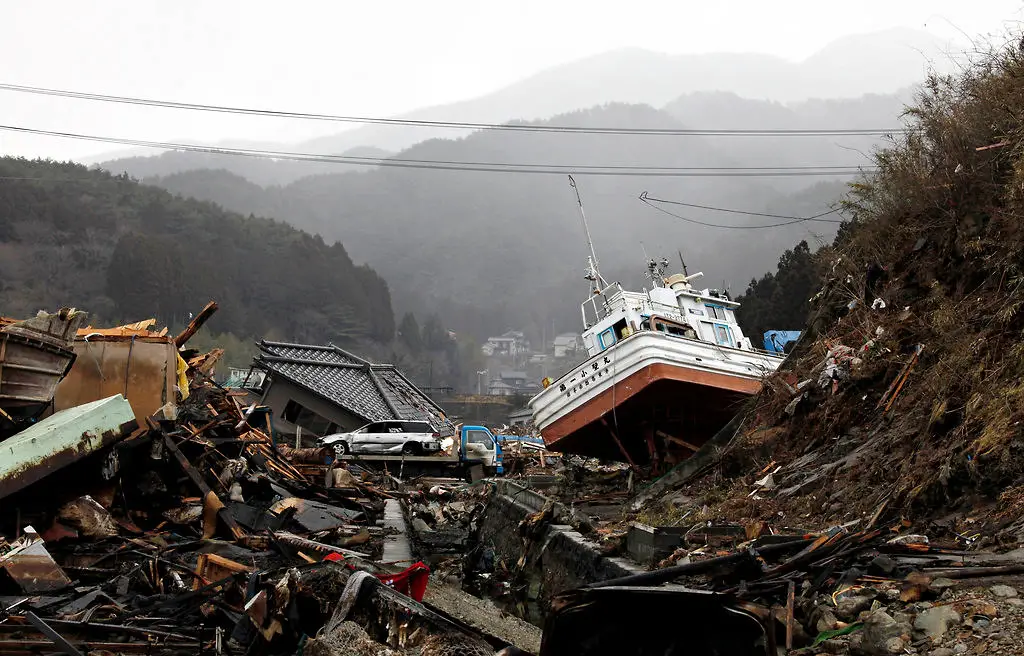
The Tsunami: Unstoppable Waves
The earthquake was only part of the story. As the sea trembled, it released waves more powerful than anyone could imagine, changing the face of coastal Japan in a matter of minutes. Let’s explore how these waves formed, traveled, and reached shores far beyond Japan.
Formation and Speed of the Tsunami
The tsunami began deep under the ocean. When the earthquake struck the Tohoku region, the seafloor shifted violently, displacing a huge amount of water. Imagine dropping a stone into a still pond—the ripples spread outward. But in this case, the “stone” was an entire tectonic plate, and the ripples were fast-moving, colossal waves.
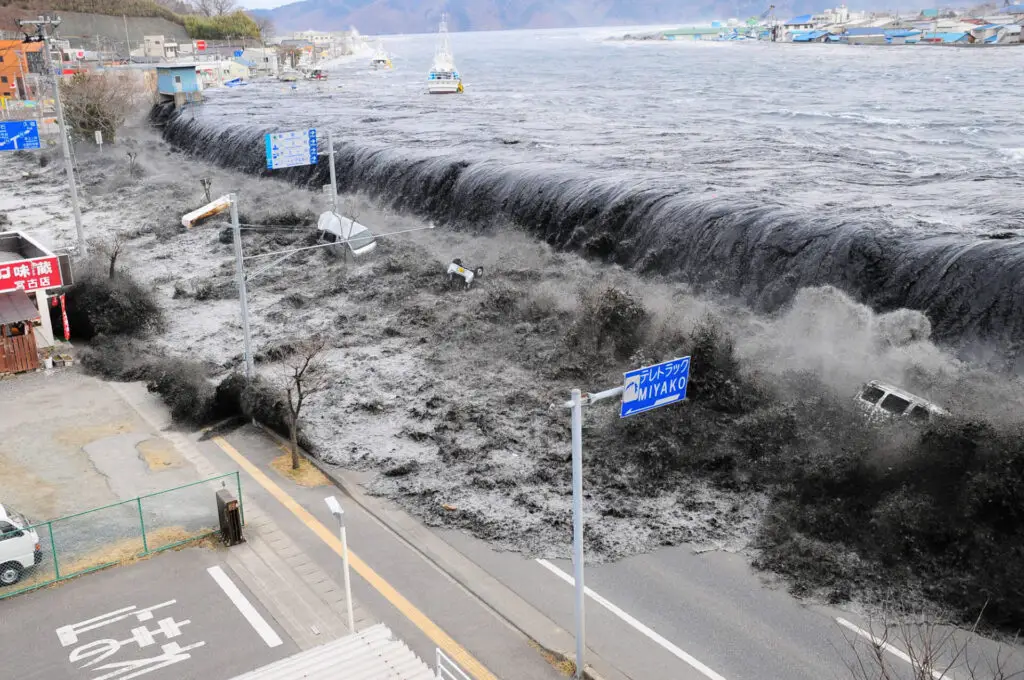
These waves reached speeds up to 500 miles per hour, similar to a jet plane. In deep ocean waters, they appeared small, often unnoticed by ships. But as the waves neared Japan’s shallow shores, they slowed down and rose dramatically, towering up to 40 meters high in some areas. The Pacific Tsunami Warning Center issued alerts, but sadly, many coastal residents had only minutes to react.
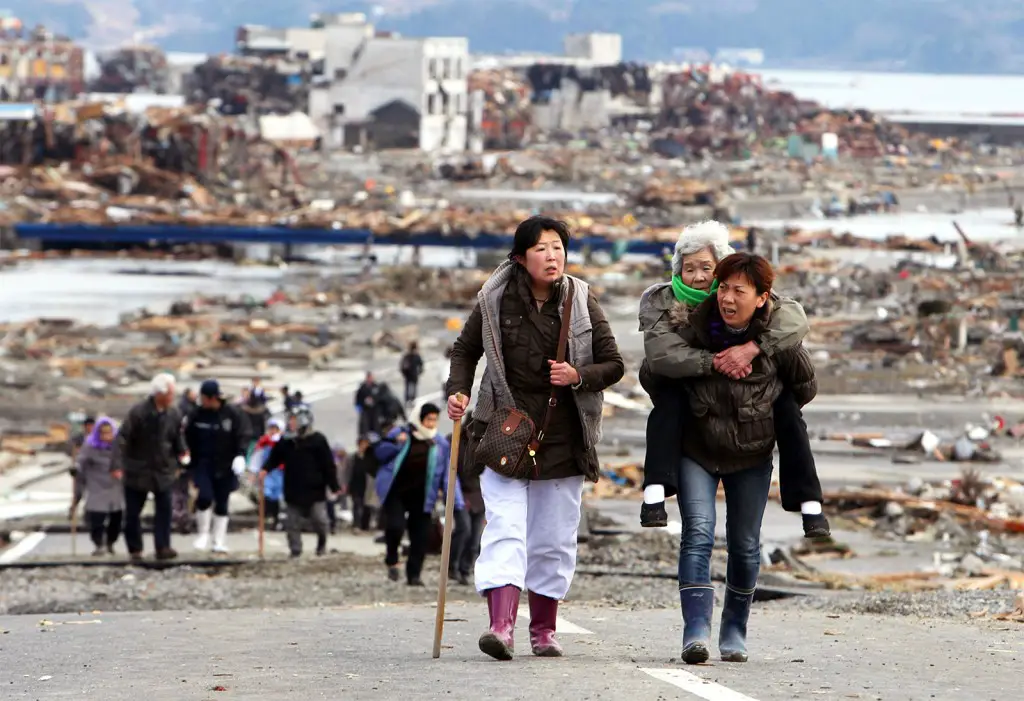
Impact on Coastal Cities
The cities of Sendai and Ishinomaki bore the brunt of this natural assault. Sendai, the largest city in the affected region, saw waves crash over its sea walls and surge miles inland. Entire neighborhoods were swept away, leaving only scraps of buildings. Cars, boats, and debris carried by the tsunami turned into battering rams, causing even more destruction.
Ishinomaki, a city famous for its fishing industry, was nearly submerged. Its residents struggled to escape the waves. The tsunami destroyed thousands of homes and critical infrastructure like highways and railroads. Lives were uprooted in an instant, with families torn apart and livelihoods erased.
Looking for a broader picture of the immediate effects? Check out Japan earthquake and tsunami of 2011.
Global Reach of the Tsunami
The enormity of the tsunami didn’t stop at Japan. It traveled across the Pacific, crossing thousands of miles to touch distant shores. In Hawaii, waves nearly two meters high caused extensive flooding along the coast. California and Oregon also experienced notable damage, with harbors disrupted and boats capsized.
In some areas, the force of the tsunami waves revealed the interconnectedness of our oceans. The disaster reminded coastal communities worldwide of their inherent vulnerability. Want to explore how such events reshape global policies? Read more about the widespread impact of the Japan Earthquake 2011 tsunami.
Understanding the tsunami’s sheer scale—the speed, height, and destruction it brought—sheds light on why it’s remembered as one of the most devastating forces in modern history.
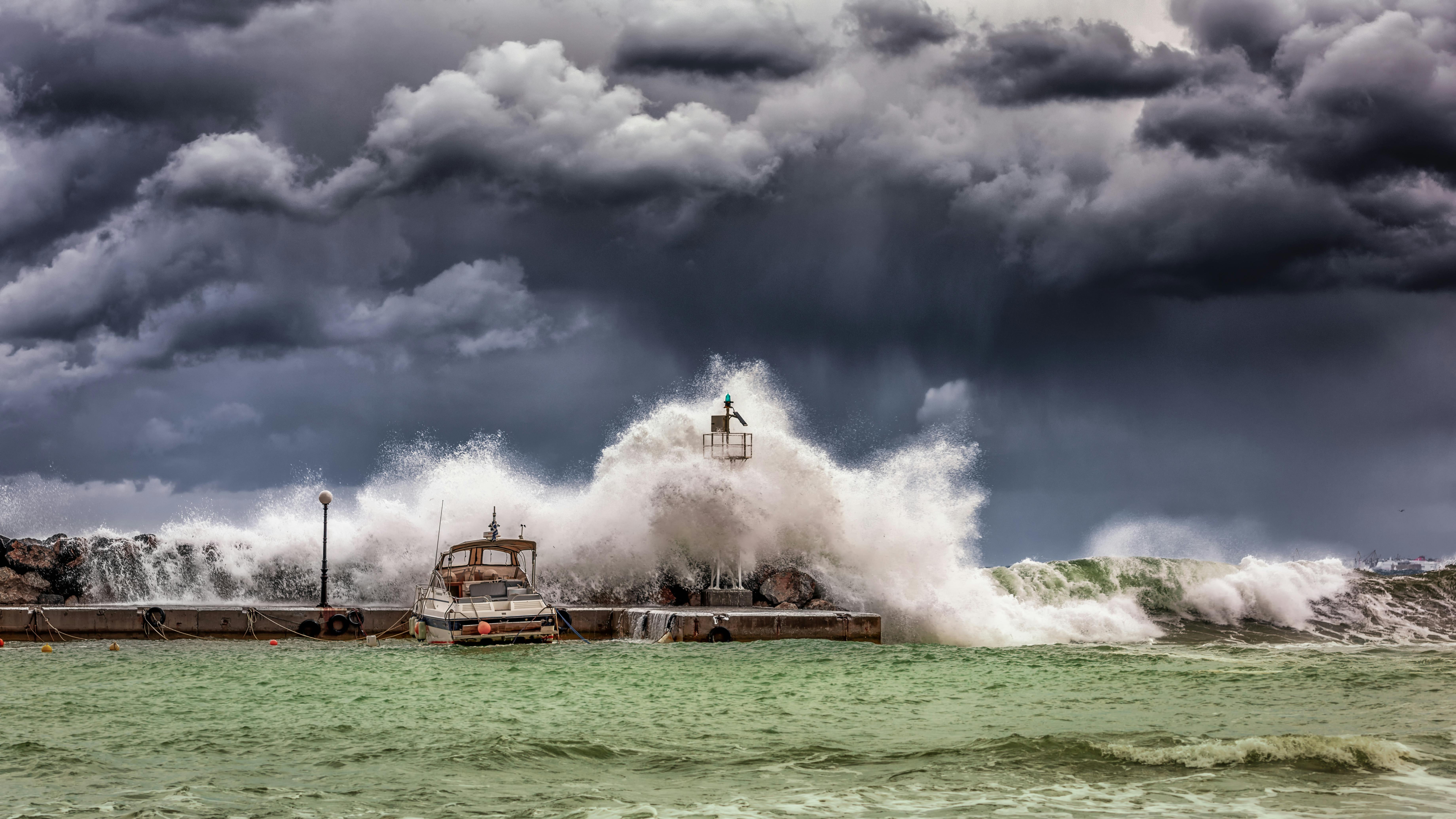 Photo by GEORGE DESIPRIS
Photo by GEORGE DESIPRIS
Human and Economic Toll
The 2011 Japan Earthquake and Tsunami caused devastation on a scale that stretched human understanding. It wasn’t just nature’s wrath; it was an event that reshaped lives, cities, and an entire nation’s economy. This section explores the immediate loss and long-term impact it left behind.
Lives Lost and Unaccounted For
The numbers themselves are staggering, but each statistic represents a life—a family torn apart. Over 19,000 people lost their lives due to the earthquake and tsunami, most from the monstrous waves. Beyond those counted, over 2,500 individuals remain classified as missing to this day. More than 450,000 people found themselves displaced from their homes, seeking refuge in temporary shelters.
Children lost parents, communities were decimated, and entire neighborhoods disappeared under floodwaters. Survivors recall the moments of panic when sirens blared and icy water surged through towns. The memory of entire families swept away serves as a somber reminder of nature’s unforgiving power.
Damage to Infrastructure
The destruction wasn’t limited to human lives. Some of Japan’s most important infrastructure systems were wiped out in minutes. Roads that once connected rural towns were torn apart, and airports became unusable as runways were flooded or buried in debris.
Here are major examples of damage:
- Sendai Airport was submerged under several feet of water, halting all operations.
- Entire railway lines in the Tohoku region were destroyed, severing vital transit routes.
- Seawalls, designed to protect coastal towns, crumbled under the tsunami’s sheer force.
- Around 138,000 homes and buildings were completely annihilated.
Rebuilding infrastructure has been a monumental task, with some efforts still ongoing, even years later. The work reflects not just technical challenges but emotional ones for communities.
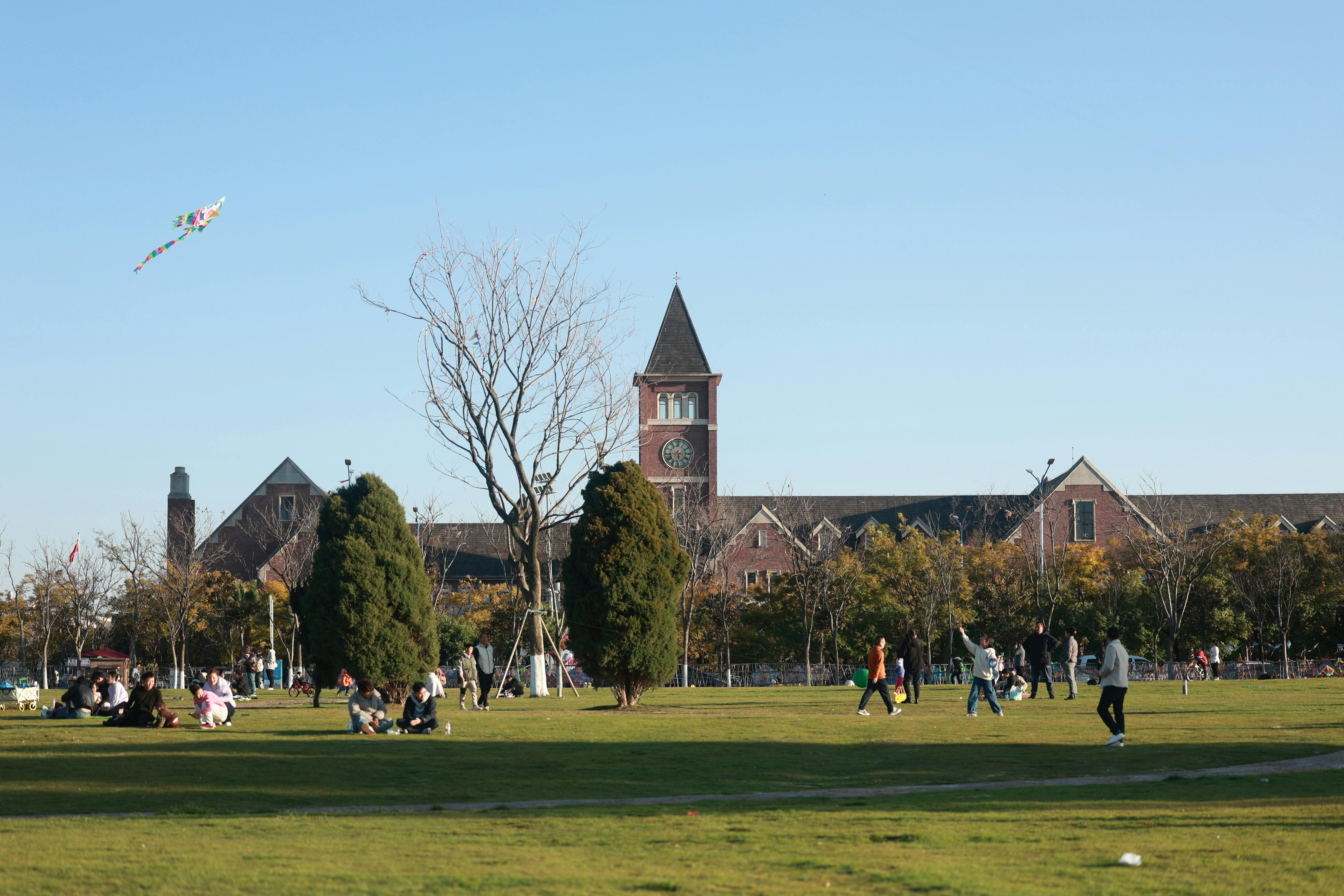 Photo by Andy Lee
Photo by Andy Lee
Economic Impact
Economically, the disaster was one of the most expensive in history, with losses estimated between $195 billion and $305 billion. This was not just about repairing broken buildings. Consider the lives uprooted, businesses ruined, and opportunities lost. Industries like fishing and agriculture, pivotal to Japan’s rural economy, were decimated.
Rebuilding has required massive investment:
- Residential and Commercial Losses: Hundreds of thousands of structures needed rebuilding.
- Energy Sector: The meltdown of the Fukushima Daiichi nuclear plant alone escalated costs and complexities.
- Supply Chain Interruptions: Japan’s export-driven economy saw major disruptions, impacting global industries like electronics and automotive.
The financial recovery wasn’t swift. Many communities continue to tackle the deep economic wounds. If you’re curious, check out Earthquake, Tsunami, Meltdown – The Triple Disaster’s Economic Impact.
The Japan Earthquake of 2011 wasn’t just about immediate damage; it left a scar on the country’s economy that required endurance, planning, and willpower to heal.
The Fukushima Nuclear Disaster
The Fukushima Nuclear Disaster remains one of the most defining chapters of the Japan Earthquake 2011 tragedy. This catastrophic event was triggered by a perfect storm of natural forces, bringing Japan face-to-face with one of the worst nuclear incidents in history.
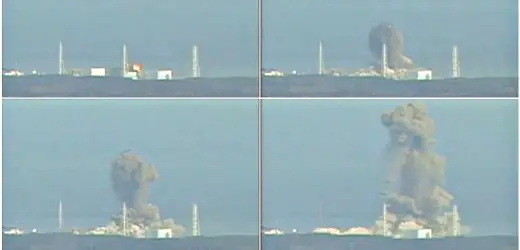
The Initial Damage
When the earthquake shook Japan, the Fukushima Daiichi Nuclear Plant stood its ground. But the following tsunami changed everything. Waves over 15 meters high overwhelmed the plant’s seawall, flooding the facility. Imagine trying to keep a lifeboat afloat during a hurricane — that’s how suddenly things spiraled out of control.
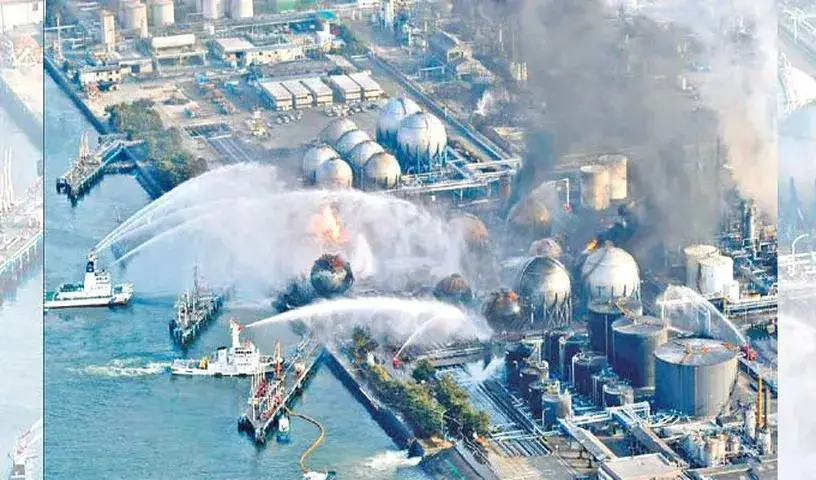
The flooding caused a complete power outage, leaving emergency cooling systems inoperable. Without cooling, the reactors began overheating, leading to fuel meltdowns in three units. The lack of electricity left staff unable to monitor and manage the situation effectively, amplifying the scale of the disaster. For more detail, read about the Fukushima Daiichi Accident.
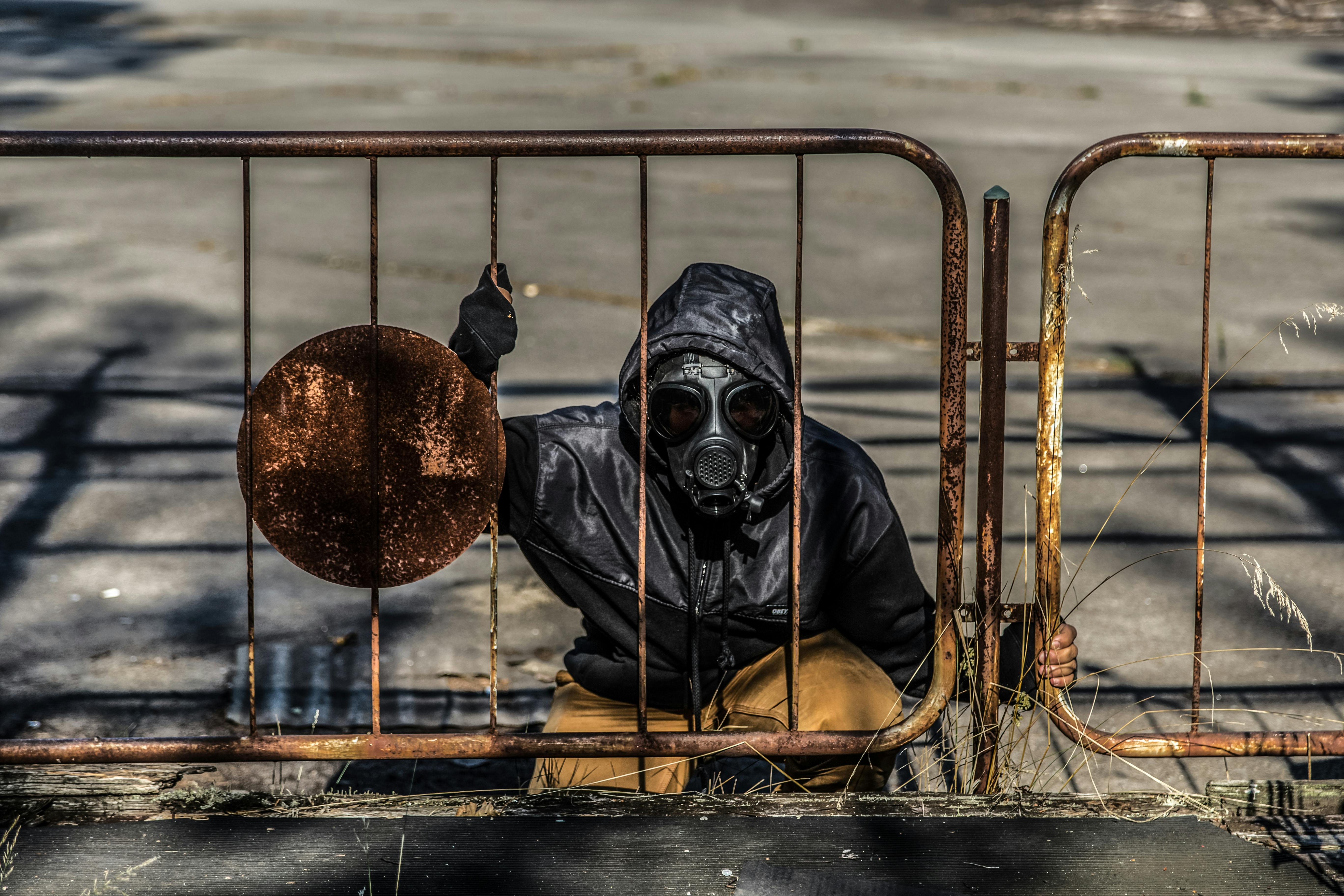 Photo by Wendelin Jacober
Photo by Wendelin Jacober
Radioactive Contamination
Once the reactors failed, the plant began leaking radioactive material into the environment. The air swirled with particles, while contaminated water poured into the ocean. It was as though Pandora’s box had been opened, releasing unseen hazards into the world.
Marine life took a major hit. Fishermen faced years of hardship as toxic waters made seafood unsafe. Radioactive isotopes even reached the California coastline months later, underlining the global spread of the contamination. For an overview of the environmental toll, refer to the Fukushima Daiichi Nuclear Accident.
Evacuation and Health Concerns
In the hours and days following the meltdown, over 150,000 residents were ordered to evacuate. Families left their homes with little more than the clothes on their backs. Can you imagine being told to leave everything behind?

The evacuation saved lives but came at a cost. Anxiety peaked as people worried about exposure. Specialists tirelessly monitored radiation levels, and individuals faced uncertainty over potential long-term health consequences. Many still live in temporary housing today, unsure if they’ll ever return to their homes.
For a deeper understanding of immediate health impacts, check out Fukushima nuclear accident.
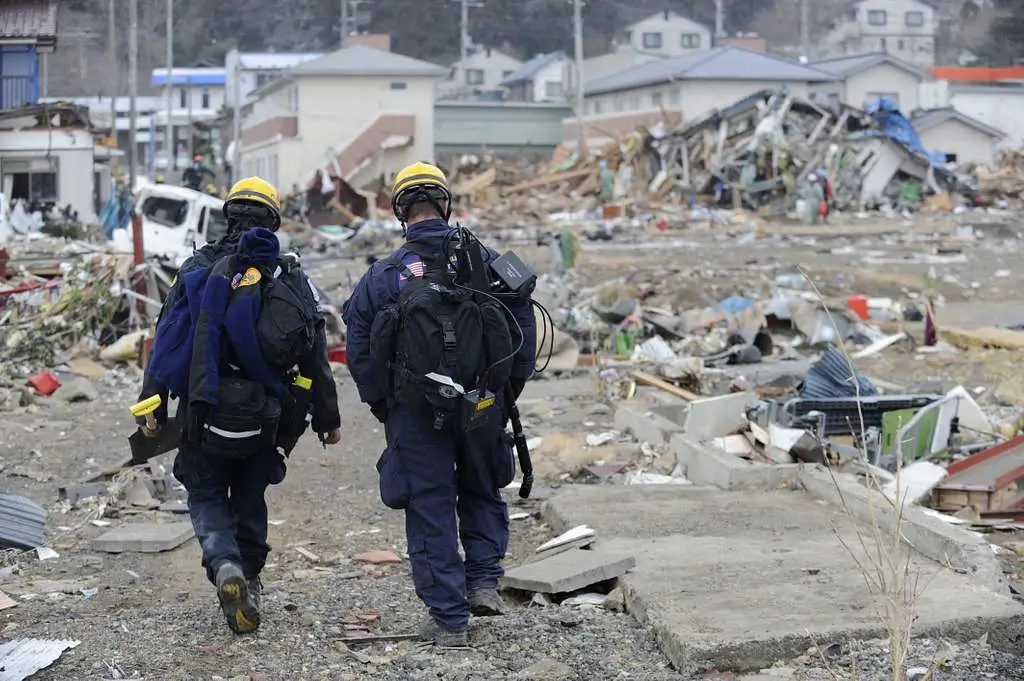
Long-Term Challenges
Even after over a decade, the challenges linked to Fukushima persist. Decontaminating the areas affected by radiation is an immense and slow process. Workers continue cleaning up radioactive debris, and contaminated water storage remains a prickly issue for the region’s recovery.
Adding insult to injury, many displaced residents struggle with economic and emotional tolls. Rebuilding their lives has proven difficult, with some still unable to move back home due to contamination risks.
Explore more about ongoing efforts and their global implications at The Fukushima Daiichi nuclear accident: 10 years later.
This disaster is a haunting reminder of the powerful intersection between natural forces and human technology. It continues to challenge Japan’s strength and resilience.
Rebuilding and Recovery Efforts
The aftermath of the Japan Earthquake 2011 was a time of profound challenge and extraordinary resilience. Amidst the destruction, the country united with support from across the globe to rebuild what was lost. From rescue operations to long-term recovery plans, the journey is a testament to Japan’s indefatigable spirit. Let’s break down the steps they took toward recovery.
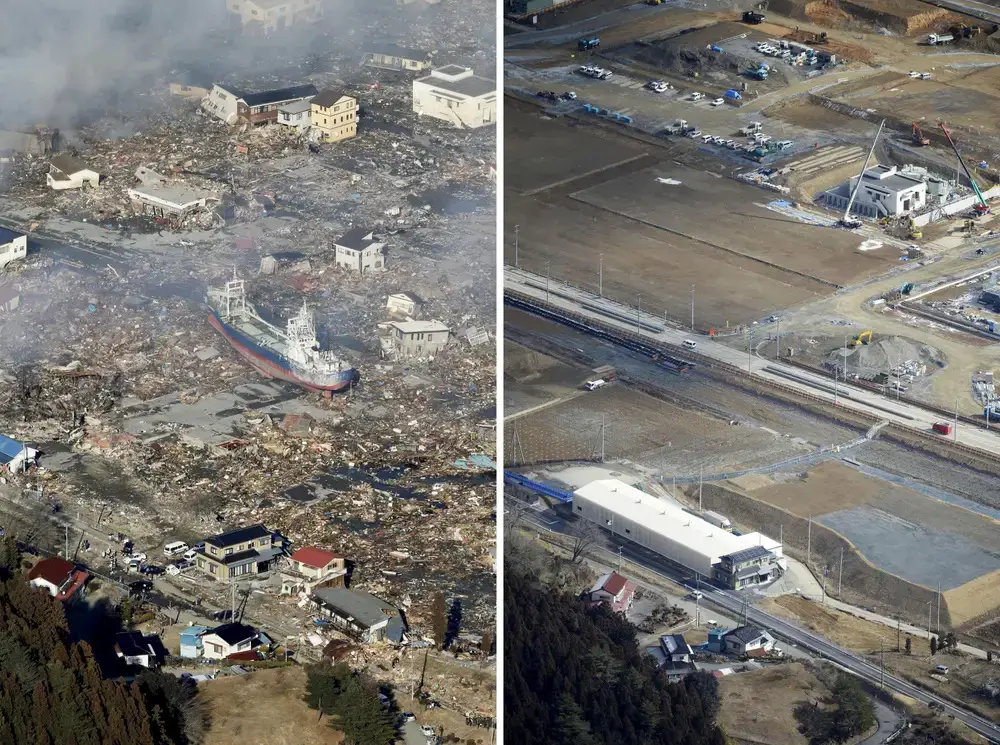
Immediate Humanitarian Response
When disaster strikes, every second counts. In the chaotic hours after the earthquake, rescue teams raced against time to pull survivors from the rubble. Emergency services and self-defense forces were deployed to affected areas within hours. They worked tirelessly, providing food, water, and first aid to those in need.
Global support poured in rapidly. Over 140 countries and numerous international organizations offered assistance. Non-profits like the Direct Relief organization played a critical role by donating medical supplies and coordinating relief packages. Aid ranged from financial support to specialized rescue teams equipped with search dogs and heavy machinery.
Temporary shelters were set up to house hundreds of thousands displaced by the event. Volunteers from across Japan came to assist, underscoring the collective effort to provide warmth and care amidst the devastation.
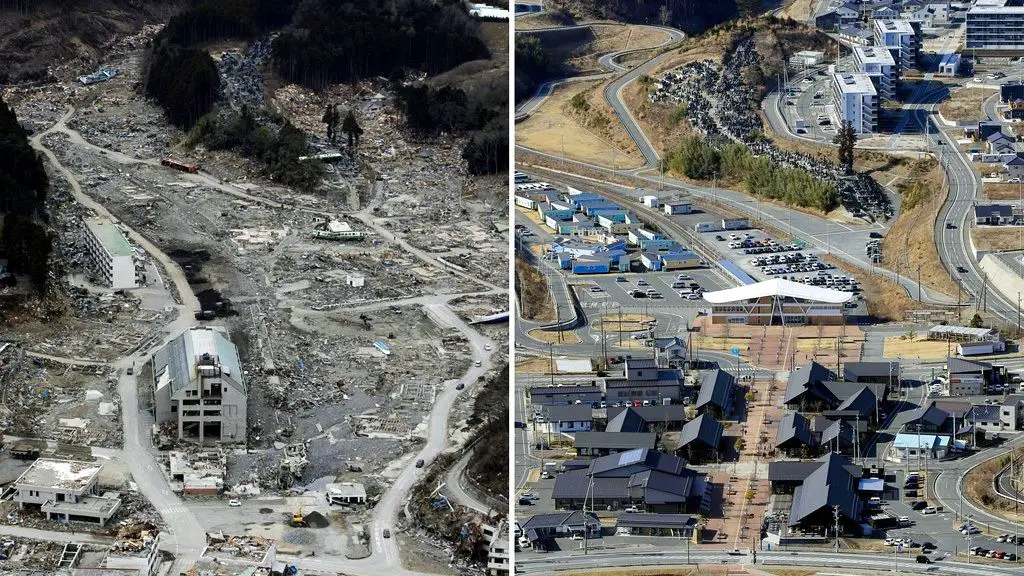
Infrastructure Reconstruction
Rebuilding Japan’s infrastructure was no small feat. The tsunami obliterated homes, roads, railways, and ports, leaving the region unrecognizable. Reconstruction agencies faced immediate challenges, from clearing debris to ensuring stable power and water supplies.
The government established a Reconstruction Agency, which played a key role in directing funds and overseeing rebuilding projects. Coastal regions saw the construction of advanced seawalls and elevated housing to prevent future disasters. Railway lines that were wiped out were either restored or rerouted for improved safety.
By 2023, most of the infrastructure has been rebuilt, as detailed by the Reconstruction Agency. While progress is evident, the process underscored the complex balance between speed and thoughtful planning.
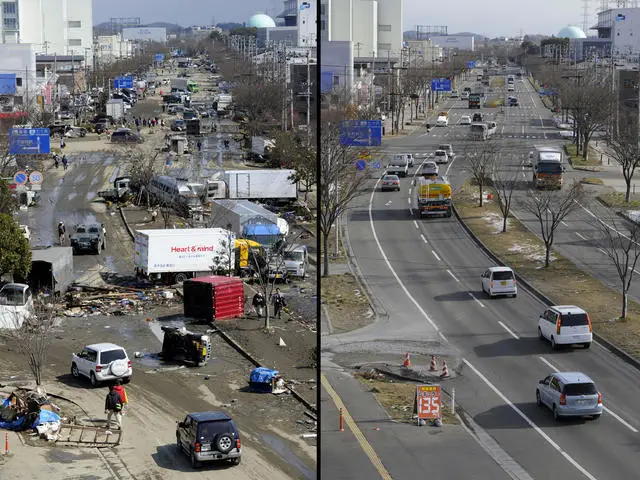
Community and Emotional Healing
Natural disasters don’t just break structures—they fracture communities and spirits. In the years following the earthquake, Japan’s focus wasn’t just on rebuilding physical spaces but also mending emotional wounds.
Community centers became safe spaces for shared stories and support. Families who lost everything received donations and guidance to restart their lives. Memorials were erected in hard-hit areas like Sendai, offering a place to mourn and remember. March 11 is now a national day of remembrance, where people pause to honor those lost.
Art and music therapy programs were also introduced to aid emotional recovery. For instance, choirs and concerts brought communities together to heal through shared experiences. The strength found in these moments illustrates the unyielding spirit of the survivors.
Heartwarming Stories
The 2011 Japan Earthquake and tsunami caused massive destruction. Yet, stories of resilience and hope emerged.
Hiromitsu Shinkawa
One inspiring account is of Hiromitsu Shinkawa, a 60-year-old man swept out to sea by the tsunami. For two days, he clung to the roof of his house until a helicopter located him about 10 miles offshore. Despite the ordeal, he survived and was taken to a hospital. His story became a symbol of endurance and gave people strength.
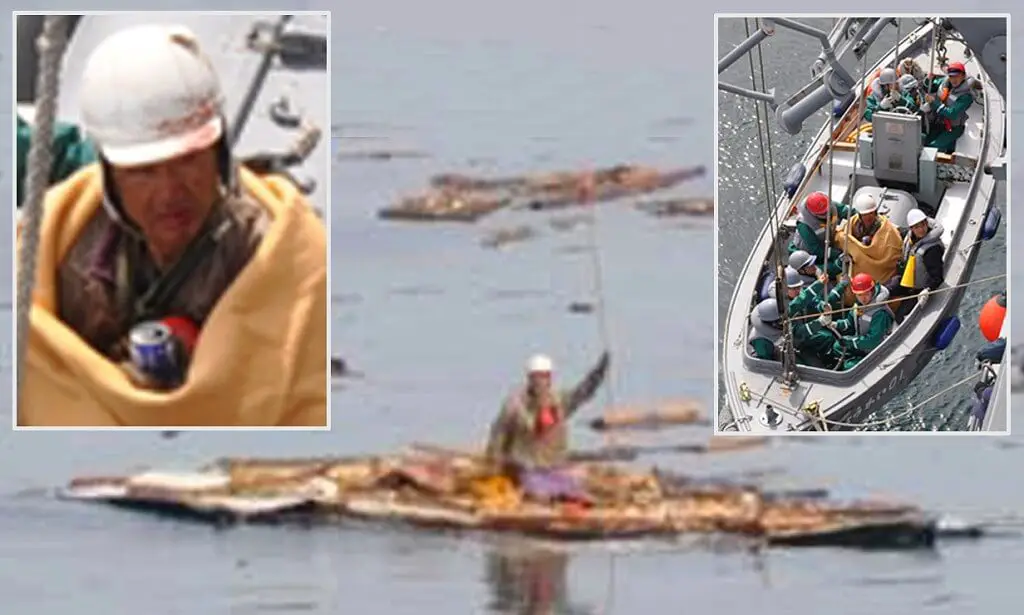
Miracle Pine
Another powerful story centers on the “Miracle Pine” in Rikuzentakata, a coastal town in Iwate. The tsunami wiped out an entire forest of 70,000 trees, but one, standing over 80 feet tall, remained. This lone tree became a beacon of hope and determination. Residents worked tirelessly to protect it, and it grew to represent the town’s recovery.
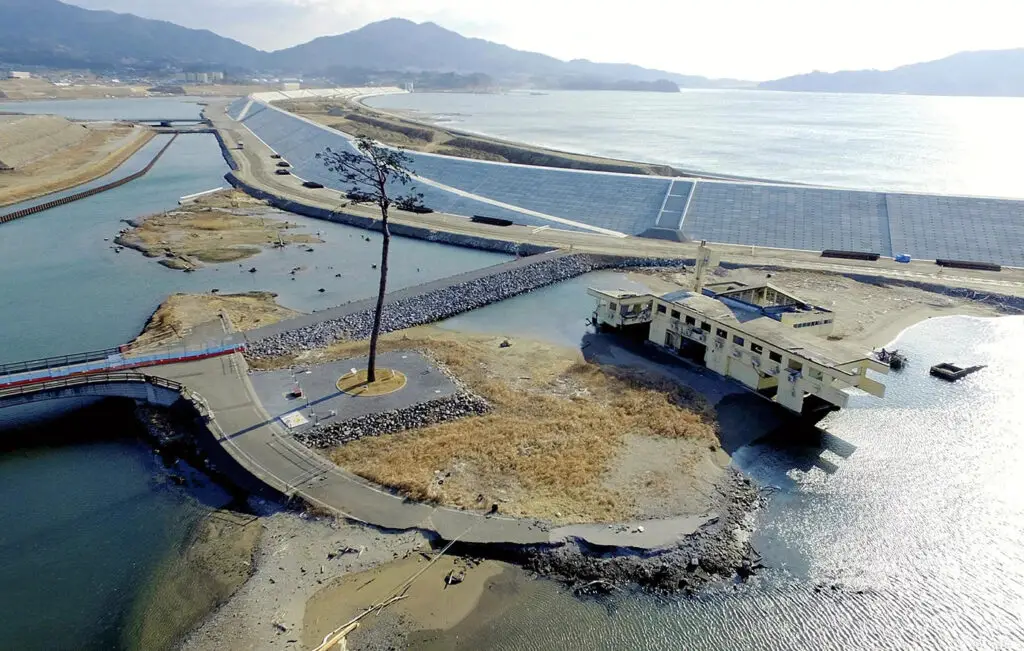
Acts of Kindness
In the aftermath of the disaster, many people were forced to live in evacuation camps. Support poured in from around the world, with volunteers providing food, medical aid, and financial donations.
One example of this kindness came from a group of Americans heading to a camp. With roads destroyed, they had to take a challenging route to reach their destination. Their plan was to donate $100,000 to the camp. However, the camp leader declined, explaining that other camps, some in remote forest areas, were in greater need. He suggested giving the funds to the Red Cross so the aid could be distributed fairly. The group agreed and redirected the money to help all the camps.
This story highlights the power of selflessness and compassion, even in devastating circumstances. It’s a reminder that goodness can shine through, even in life’s darkest moments.
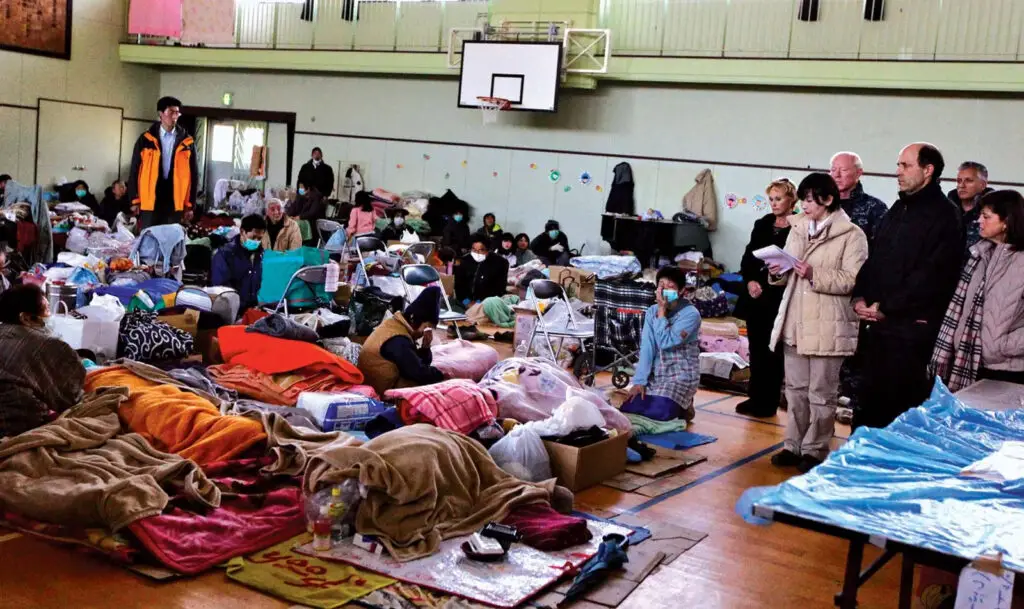
Conclusion
The 2011 Japan Earthquake was not just a calamity—it reshaped the nation and its people. It left scars but also revealed extraordinary strength—a testament to perseverance and humanity’s ability to recover. Communities joined hands in mourning loved ones, rebuilding homes, and learning hard lessons.
This event serves as a stark reminder of nature’s immense power and our shared fragility. Yet, it also highlights the unyielding resolve of a nation to come together, overcome, and rebuild. What lessons from this tragedy resonate with you most deeply? Share your thoughts and hopes for a resilient future.
Looking for more on Japan’s recovery journey? Stay connected for insights and updates at Japan Shine Again.

